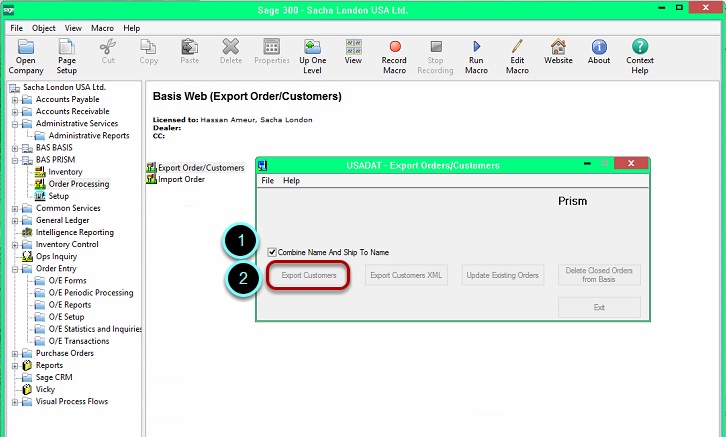
The data displayed in any Sage 300 CRE inquiry is easily pushed directly into Excel using the “Export to Excel” button on the inquiry menu toolbar. Excel can do this too using the “Text to Columns” feature (Data Tab à Data Tools) to import data, and the *.CSV Save As format to export data. Each separated by a comma.Ĭomma-delimited files are commonly used to transfer data from one application to another because most database systems can export and import comma-delimited data.

In the example below, there are five fields of data in the first row or record. This is known as comma-delimited (also comma-separated values (CSV)). The most popular delimiter is a comma, where a comma marks the separation between two pieces of data. Think of the fields as columns of data that need to be identified and separated. 3 Ways to Use SAGE 300 CRE to Push Data Into ExcelĮxcel can open text files that are formatted with a variety of field separators (delimited).

The reference above is from Microsoft 365. *The exact name depends on the version of Excel. There is no better method to use for often used and updated workbooks. Pulling data bypasses the whole export, import, reformat routine needed to varying extents with the other two methods. The best part of this feature is that the returned data is not static and can be refreshed at any time. As a result, the value of pushing data diminishes when the recurring nature of a workbook increases.Įxcel can directly pull information from an external source using the Get Data feature (Data à Get & Transform Data)*. When available, this is often used in conjunction with the Copy/Paste step and requires additional formatting and manipulation to get the data into its final form. Usually, data is pushed into a new workbook or worksheet. Some applications, not all, support the ability to push their data directly into Excel. As long as the source data is electronic and formatted so that Excel can interpret rows and columns of data, Copy and Paste can be used. The same concept applies to copying data from another data source, such as a text, pdf, or even another Excel file into Excel. Any user of Excel has copied or moved data from one cell to another within the worksheet.
#ODBC SAGE 300 MANUAL#
However, the trick is getting the data out of your software and into Excel.Īside from manual data entry, there are three general methods to move information into Excel. With that adoption rate, the chances are high that the necessary skill to develop quality Excel-based solutions already exist within an organization. According to Forrester Research, 81% of businesses use Excel.

Other times, it hinders the ability to quickly analyze, structure, manipulate, or use the data in other external systems. Sometimes, the inability to change data is a good thing because it builds confidence in the information and standardizes formats. While they can be powerful and feature-rich, these tools often require specialized training to optimize their benefit and are often difficult to manipulate on-the-fly. Often they have built-in reports, dashboards, and complex entry screens that allow view-only access.įor more advanced data analysis, there are data output customization tools, like Sage 300 CRE’s Report, Inquiry, and Financial Statement Designers, and 3 rd party products like Crystal Reports and AnterraBI.

Many software applications – like Sage 300 Data – are excellent at manipulating and maintaining information. Keep reading to learn some tips and tricks using Sage 300 CRE data exchange features to make your data work more efficiently for you. How much time do we spend in Excel entering data vs.


 0 kommentar(er)
0 kommentar(er)
